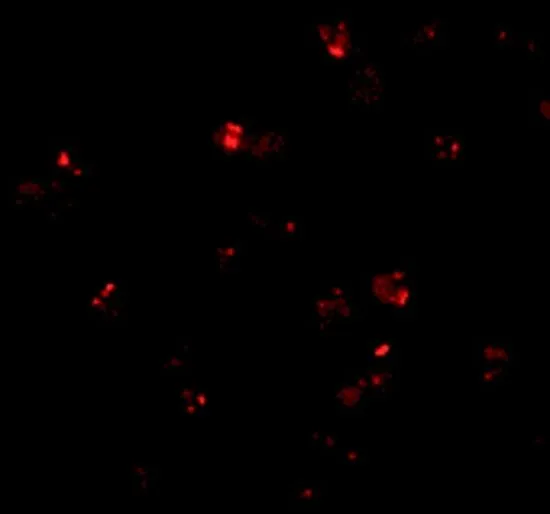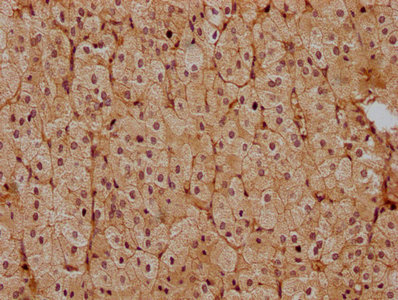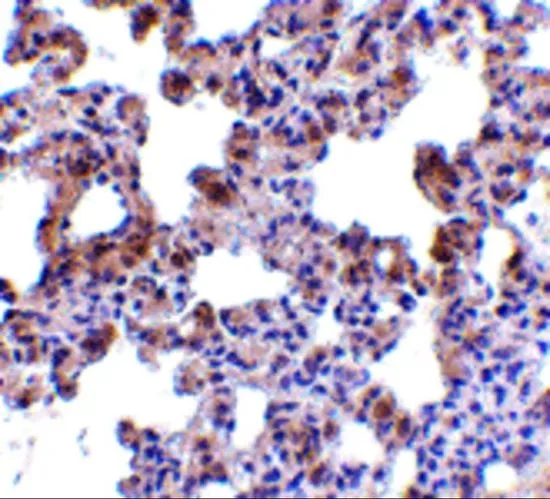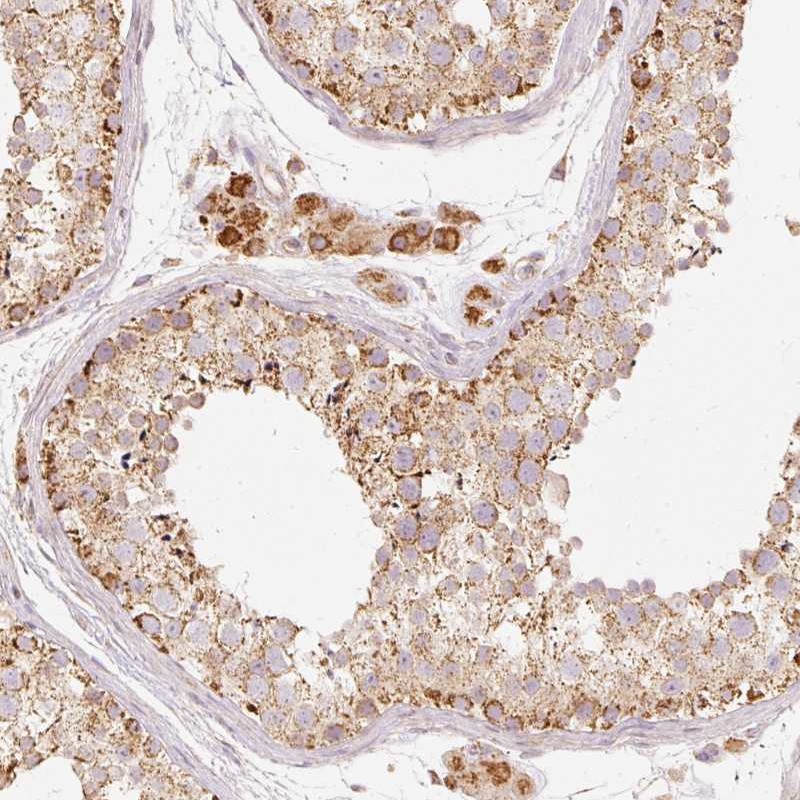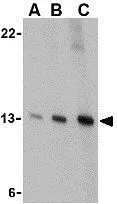
WB analysis of K562 cell lysate using GTX85064 PEN2 antibody. Working concentration : (A) 0.5, (B) 1, and (C) 2 microg/ml
PEN2 antibody
GTX85064
ApplicationsImmunoFluorescence, Western Blot, ELISA, ImmunoCytoChemistry
Product group Antibodies
TargetPSENEN
Overview
- SupplierGeneTex
- Product NamePEN2 antibody
- Delivery Days Customer9
- Application Supplier NoteWB: 0.5 - 2 microg/mL. *Optimal dilutions/concentrations should be determined by the researcher.Not tested in other applications.
- ApplicationsImmunoFluorescence, Western Blot, ELISA, ImmunoCytoChemistry
- CertificationResearch Use Only
- ClonalityPolyclonal
- Concentration1 mg/ml
- ConjugateUnconjugated
- Gene ID55851
- Target namePSENEN
- Target descriptionpresenilin enhancer, gamma-secretase subunit
- Target synonymsACNINV2, MDS033, MSTP064, PEN-2, PEN2, gamma-secretase subunit PEN-2, hematopoietic stem/progenitor cells protein MDS033, presenilin enhancer 2 homolog
- HostRabbit
- IsotypeIgG
- Protein IDQ9NZ42
- Protein NameGamma-secretase subunit PEN-2
- Scientific DescriptionPEN2, in addition to presenilin, nicastrin, and APH-1 forms the gamma-secretase protein complex, a membrane-bound aspartyl protease that can cleave certain proteins at peptide bonds buried within the hydrophobic environment of the lipid bilayer. This cleavage is responsible for a key step in signaling from several cell-surface receptors and is thought to be required for the generation of the neurotoxic amyloid peptides that are central to the pathogenesis of Alzheimers disease. Like the tumor necrosis factor-alpha-converting enzyme (TACE) and the beta-site cleavage enzyme (BACE) protease families, gamma-secretase will cleave the amyloid precursor protein (APP), but within the intramembrane region of APP, resulting in either the non-toxic p3 (from the alpha and gamma cleavage site) or the toxic A
- Storage Instruction-20°C or -80°C,2°C to 8°C
- UNSPSC12352203

